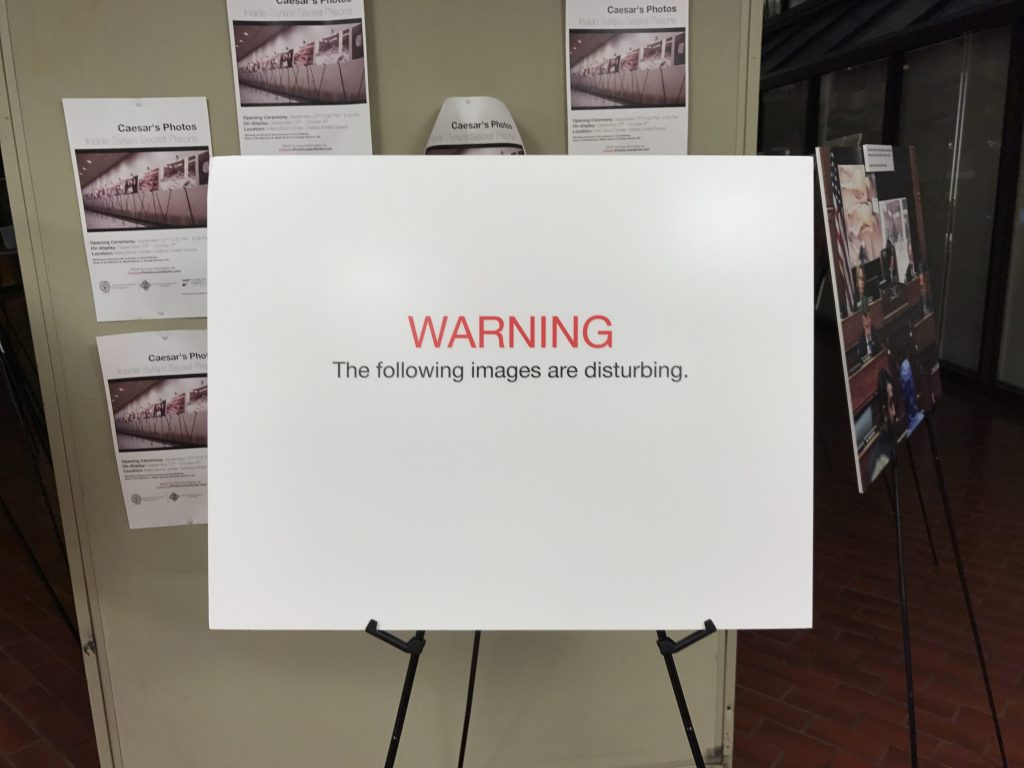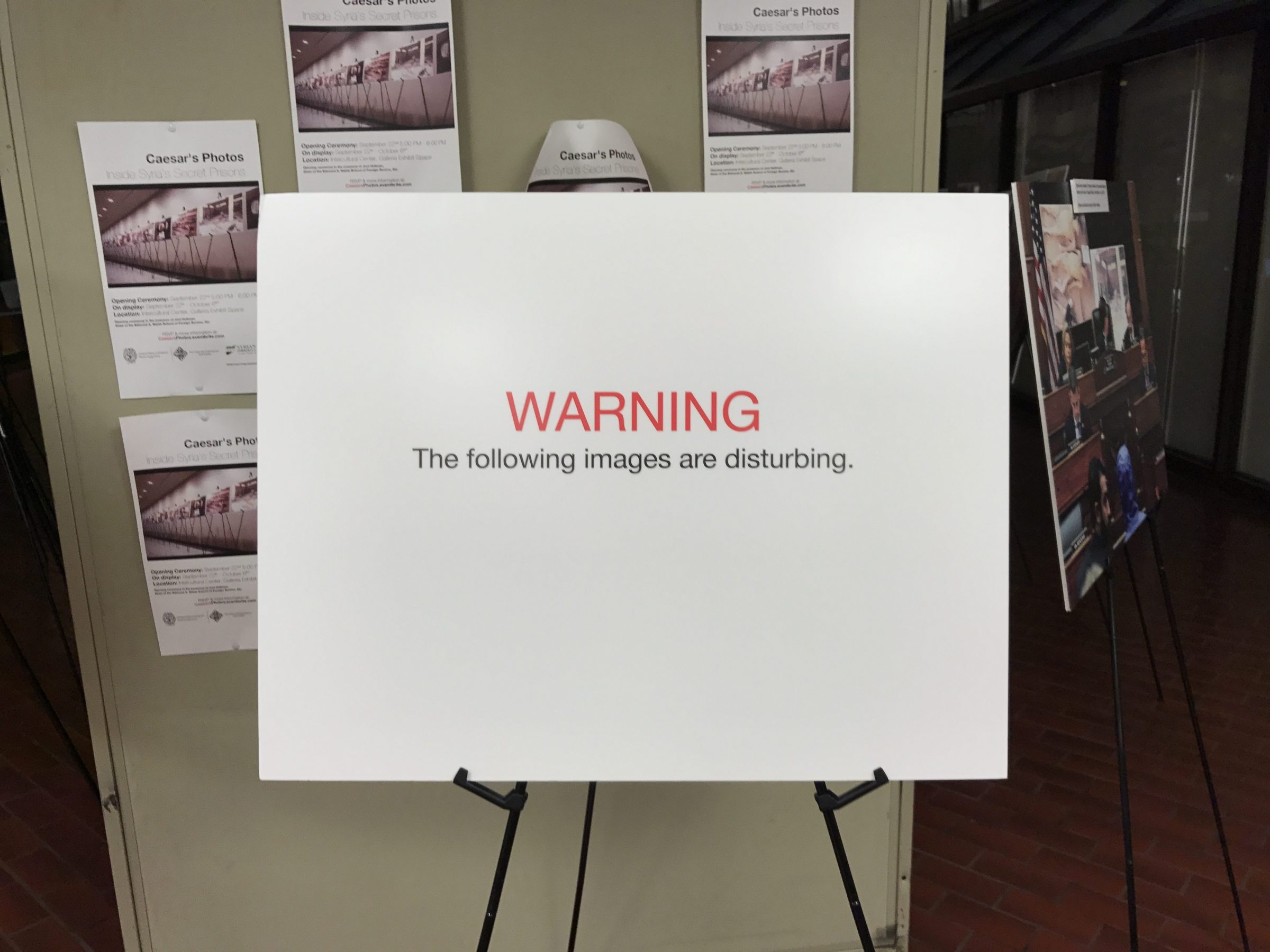On Thursday, Sep. 22, the Intercultural Center unveiled the exhibit “Caesar’s Photos,” focusing on the ongoing civil war in Syria. The conflict, now in its fifth year, has led to the deaths of over 470,000 Syrians, displaced 10 million people, and triggered a global refugee crisis.
From 2011 to 2013, the Syrian military police were instructed to photograph and document the bodies of civilians killed in Syrian detention centers. One of these policemen, under the pseudonym “Caesar,” fled Syria with some of the 55,000 images of starved and mutilated Syrian corpses, determined to raise awareness for the horrible crimes against humanity that the Assad regime is committing.

A warning sign in front of “Caesar’s Photos” in the ICC Galleria. (Photo: Phillip Steuber/The Georgetown Voice)
The photos are intense and disturbing, which is why they face inward in the exhibit, so as not to force anyone to look at them. They provide a window into a world that is very different from the quiet, clean streets outside the front gates of Georgetown University. They provide a window into a world of dusty detention camp floors, littered with blood-stained rags and mangled bodies. They provide a window into a world where human lives are worth nothing.
Georgetown students come to this school with aspirations to better the world, which is part of what helps this campus grow. It’s why so many Hoyas graduate and go on to lead remarkable careers in fields like politics and international relations. But having such noble goals and rising to such positions of power entails an immense amount of responsibility. The optimism that Georgetown students have in trying to change the world cannot be discounted, and we believe that exhibits such as “Caesar’s Photos” serve to reinforce the need for change.
Policy decisions and international agreements can often be abstract and hard to relate to real people. The photos of actual civilian bodies in Syria brings an immediacy to the effect that the foreign policy decisions of our political leaders have on the world. Constantly staying aware of brutal atrocities, such as those that the Assad regime is committing in Syria, helps to make our leaders better informed when tasked with major decisions in fields like foreign affairs.
We also strongly believe that the next step, after recognizing the importance of keeping political aspirations grounded in the understanding of real human struggle, is action. It is not enough to view “Caesar’s Photos” in isolation and recognize the horrors of them. We, as a student body, must act to remain informed on the issue of Syria, and must urge our political leaders to do the same. The statistics of suffering in Syria are horrific, but they can fall into the trap of reducing the pain of individuals to the detachment of numbers. “Caesar’s Photos” makes clear the human miseries of the conflict in Syria, and we urge you to experience this exhibit for yourself.




